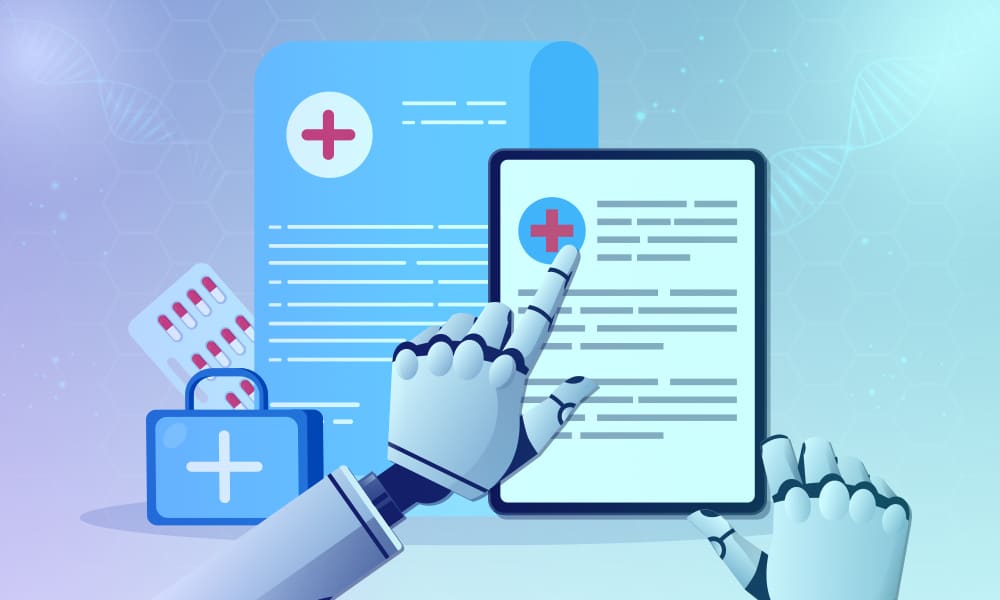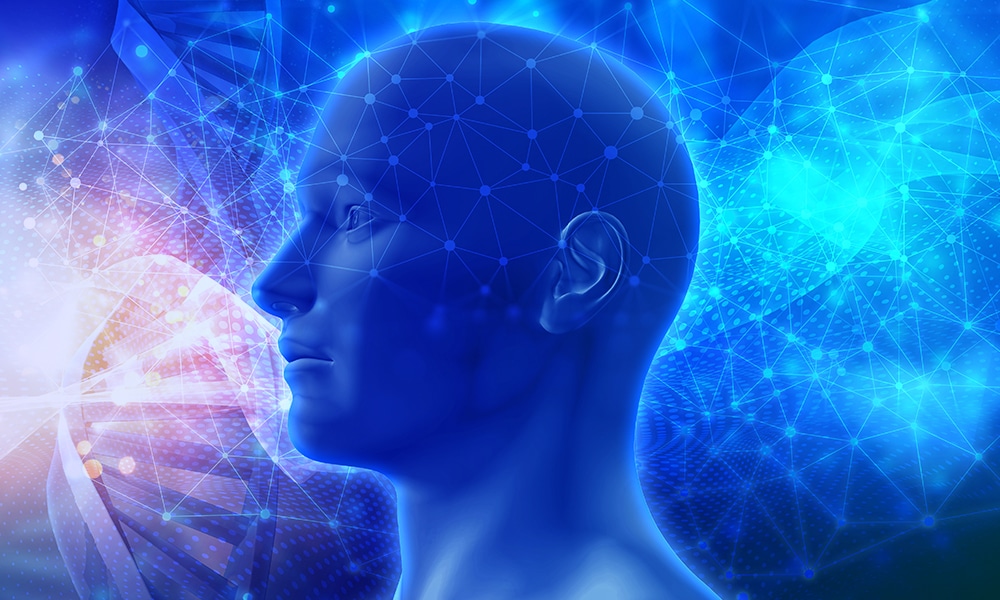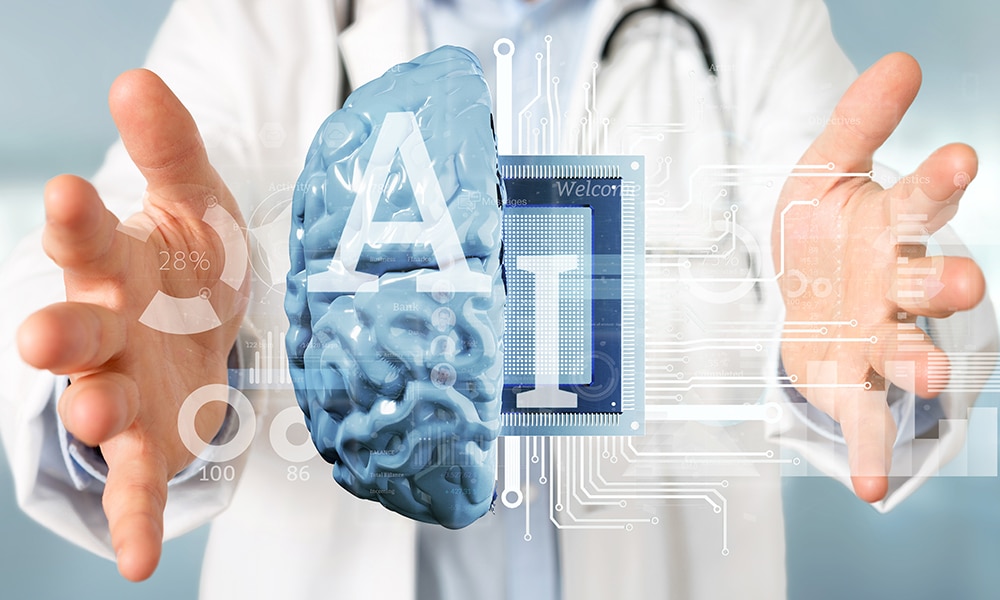The healthcare industry faces a paradigm shift in its workflows with the inception of new and advanced technologies in AI. Leveraging AI tools and technologies, improved medical outcomes can be acquired with higher healthcare efficiency.
OCR, or Optical Character Recognition, is an essential healthcare technology becoming hugely prevalent today. OCR technology helps manage the medical data of patients and hospitals and aims to streamline medical processes for better outcomes.
Let us learn about OCR in-depth and understand its various perks and limitations.
What is OCR in healthcare?
Optical Character Recognition is a technology used in healthcare to digitize data and improve data accuracy to obtain higher medical efficiency. OCR scans and converts printed and handwritten documents like patient forms, doctor’s notes, prescription labels, lab results, etc., into digital data.
This makes storing and managing healthcare information easier and creates suitable databases for the existing data. This data stored in databases is more easily accessible and can be used to generate valuable insights from a patient’s medical history.
A Quick Look Into the Working of OCR
Though OCR is getting a lot of attention lately, it is not as young as it seems. OCR was developed in 1974 in the USA for digitally recognizing and printing all font types. Fortunately, now with improved technologies, OCR, too, has become more refined and efficient. Here is how the OCR technology works:
- Primarily, the text in the image is scanned, and individual characters are segregated using an advanced program.
- Next, each character is matched to the known characters in a separate database. The program identifies and separately stores all the identified characters from the image.
- The characters are then clubbed again together as it was there in the offline format.
- Lastly, a new digital file containing the same information as in the offline medical documents is generated.
Learn About the Process of OCR in Detail! Read Now!
What are the Benefits and Drawbacks of OCR in Healthcare?
Similar to every technology, OCR, too, has its set of advantages and limitations. Let us discuss both of them so that you can fairly analyze the efficiency of OCR technology.
Benefits of OCR

- Swift Workflows: OCR results in the automation of various medical processes, including accessing information from EHR, storing and managing healthcare data, healthcare analytics, etc. This automation in the healthcare processes significantly improves the processing time and helps save time for patients and physicians.
- Higher Availability of Data: The best perk of OCR technology is that it makes data 24*7 available to the users. As the data is digitally stored, the data extraction process becomes straightforward, and patients can eliminate delays in their treatment.
- Lesser Investment in Manpower: The healthcare industry comprises various repetitive and tedious tasks that require a substantial workforce. However, with OCR, processes get automated, and the need for a healthcare workforce significantly lowers.
- Minimization of Errors: Humans are prone to errors, especially during complicated and demanding healthcare processes. Fortunately, with OCR, human intervention gets limited, and mistakes can be pretty minimized.
Drawbacks of OCR
- OCR Requires Significant Storage Capabilities: The crux of OCR technology is to digitalize all the medical data for patients and doctors for improved outcomes. However, this may require enormous storage capabilities to store and access large volumes of data.
- Vulnerability to data breaches: Data security is a major concern for healthcare institutions, and OCR technology is still not as optimized to provide adequate security to its users and is vulnerable to data breaches.
- Difficulty in Obtaining Accuracy: The most difficult part of OCR is to accurately understand complex medical terms and jargon. Wrong or improper identification of characters might lead to transcription errors or report inaccuracies.
- More Prone to Errors: The OCR technology has not reached its ultimate potential and is still prone to errors in identifying document handwriting and images.
Exploring the Use Cases of OCR in Healthcare
Here are a few potential use cases for Healthcare OCR Technology:
Scanning and Storing Medical Information
This is certainly the most important use case of OCR. Healthcare organizations have abundant disorganized data that can be effectively stored, managed, and accessed using OCR.
Invoice Management
OCR enables instantly scanning and digitizing invoices with high accuracy, which significantly helps in storing, sharing, and editing patient invoices. OCR helps healthcare facilities achieve a simplified invoice management system.
Streamlining of Medical Administration Processes
A functional healthcare institution facilitates multiple administration processes simultaneously. Leveraging OCR, large parts of these medical processes can be streamlined, and the loads on administrative teams can be lowered.
Data Extraction from Old Documents
A substantial amount of medical data that can be used to gain valuable insights into several diseases is unorganized and unused in numerous healthcare facilities. This data can be extracted and leveraged with OCR to provide better insights into various patient illnesses.
Protection of Critical Medical Data
Healthcare deals with sensitive patient information, from demographics to finances. This critical information lies unsafe when in paper form. Hence, the data can be digitized with OCR, ensuring higher security.
Ready for Your AI-Based OCR Healthcare Solution?
OCR in healthcare is becoming increasingly advanced with improved accuracy and declining costs. It opens up new opportunities for healthcare organizations to streamline paperwork processes, automate data entry, and improve the accuracy of patient care. Besides, there are several other administration benefits of adopting OCR technology. Our Shaip developers specialize in developing secure and reliable OCR solutions for complex medical requirements. You may get in touch with our experts to discuss your projects.



